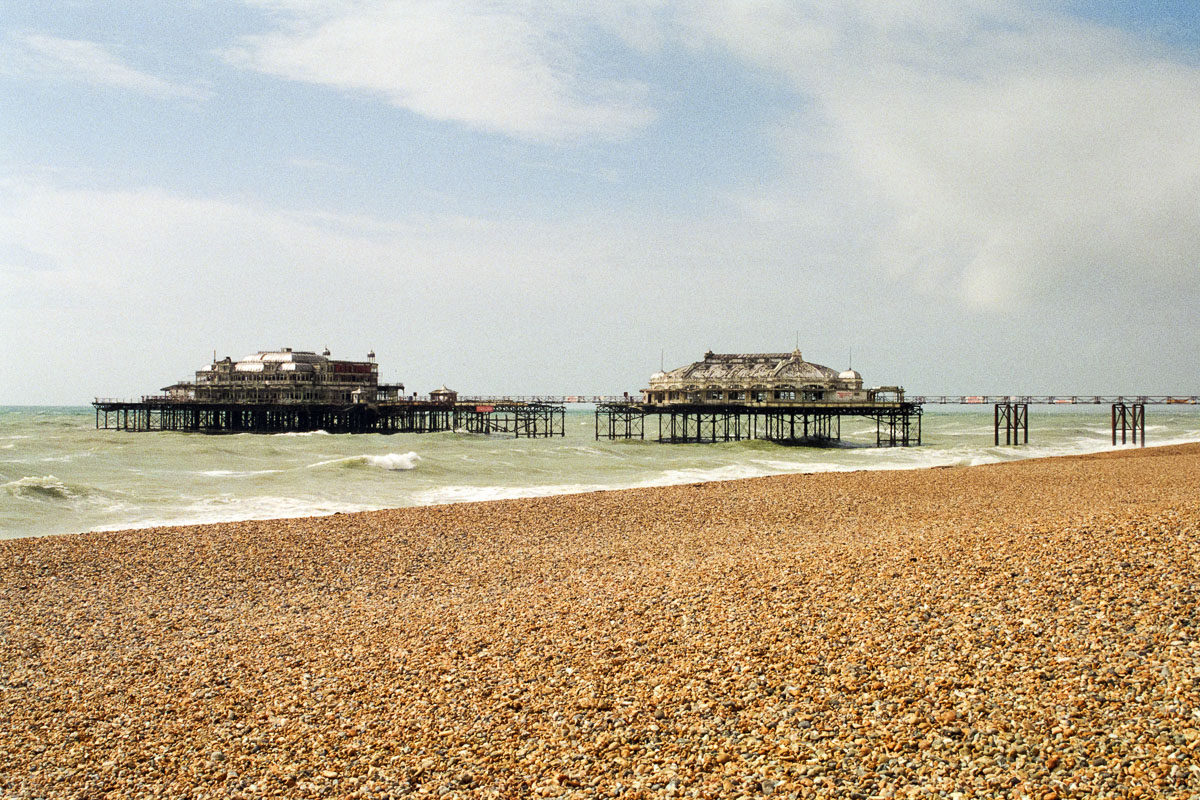Brighton West Pier tells a powerful story of what happens when time, nature, and tragedy collide. It isn’t just a relic from the past—it symbolises Victorian ambition, seaside culture, and tragic loss. Opened in 1866, West Pier was once a bustling centre for entertainment and leisure. But after decades of decline, the 2003 Brighton Pier fire tragically destroyed it. Today, West Pier stands in the sea as a haunting silhouette: one of Brighton’s most iconic landmarks.
As a documentary photographer, I’ve captured Britain’s changing cultural and architectural landscape since the late 1990s. In this post, I tell the story of Brighton West Pier through photos I took in 1999—showing it before the fire—and again in 2012, capturing the dramatic contrast between its graceful final days and ghostly ruin.
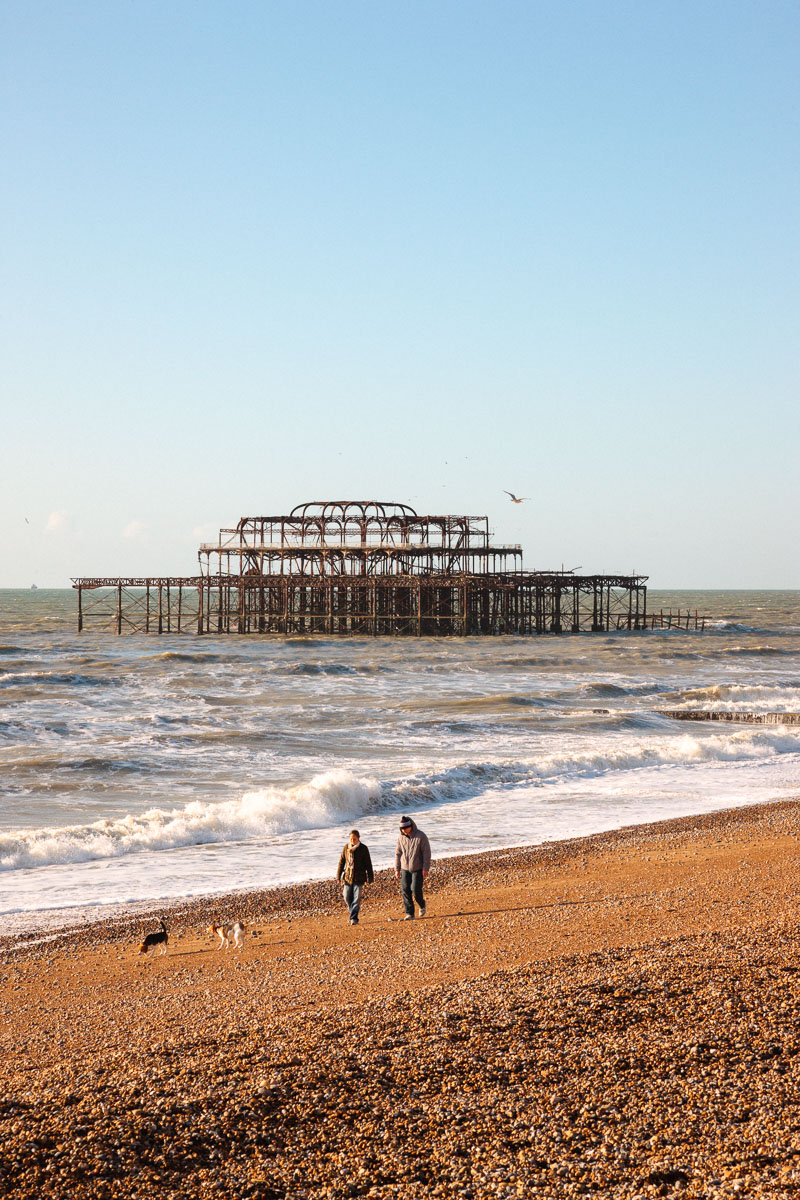
Key Points: Brighton West Pier Fire and Legacy
- Brighton West Pier burnt down in 2003 after two major fires—the police suspected arson.
- This blog shares original photos of Brighton West Pier before the fire (1999) and after (2012).
- People often confuse Brighton West Pier (1866) with the still-operational Brighton Pier, formerly Palace Pier (1899).
- The official cause of the Brighton Pier fire remains unknown, but the destruction thwarted any restoration plans.
- Today, the skeletal remains of West Pier are an iconic symbol of Brighton’s Victorian heritage and loss.
The Story of Brighton West Pier
Designed by renowned engineer and pier builder Eugenius Birch, Brighton West Pier opened in 1866 as a marvel of 19th-century innovation and elegance. Stretching 1,115 feet into the English Channel, the Victorians built it as a grand promenade where visitors could enjoy fresh air, panoramic views, and refined leisure.
Quickly becoming a star attraction in Brighton’s booming tourism scene, West Pier expanded to include a concert hall and a theatre. Its ornate ironwork, decorative kiosks, and sweeping design became defining features of Brighton seafront. At its height, West Pier was one of the country’s most popular seaside attractions, drawing crowds of locals and holidaymakers annually.
As someone who grew up along the Sussex coast, I felt moved to photograph West Pier, feeling it might not stand much longer.
West Pier Before the Fire
Although closed to the public in 1975 due to safety concerns, the vestige of West Pier remained visually striking. However, as storms and saltwater gradually eroded its structure, parts collapsed into the sea. But even in decline, it held onto its former beauty.
In 1999, I had the opportunity to photograph Brighton West Pier before the 2003 fires changed everything. I shot the abandoned structure during its final years using my Pentax MZ-50 with Konica Centuria 200 colour film. These images reveal the structural elegance that once made it a seaside hotspot, its wreckage standing proud against the waves, echoing a vibrant past.
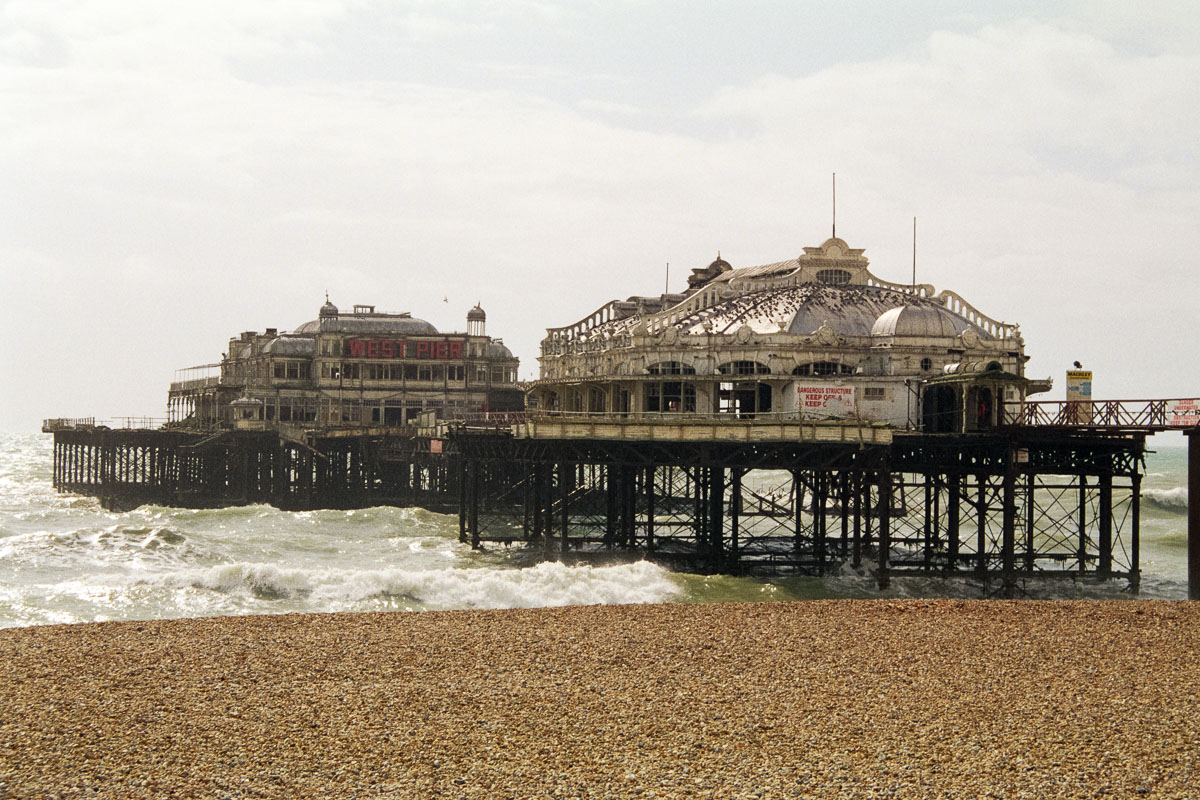
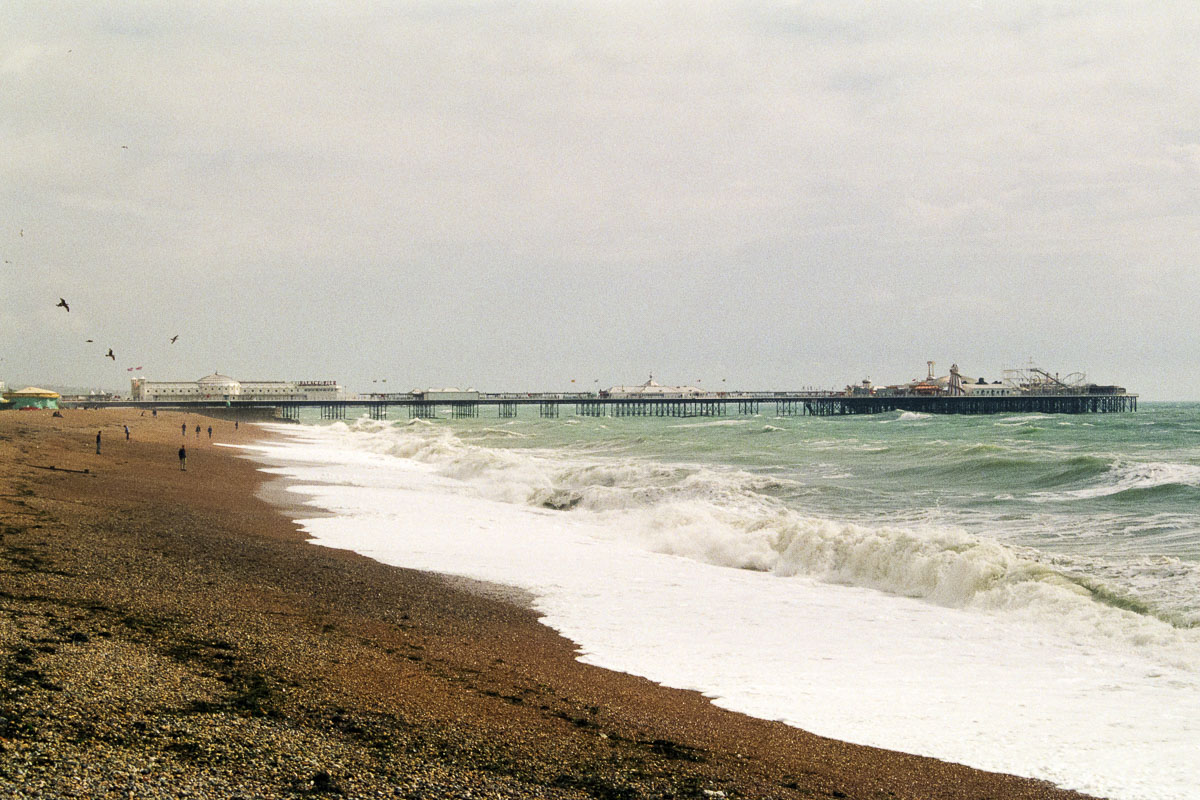
Brighton Pier Fire, 2003
When did Brighton Pier burn down? In 2003, two separate fires devastated Brighton West Pier. The first broke out on March 28, destroying the concert hall and leaving a charred, skeletal frame behind. Just weeks later, on May 11, the second fire reduced more of the structure to ruins.
What was the cause of the Brighton Pier fire? Police investigated the fire but never confirmed its exact cause, though many suspected arson. These twin blazes marked the end of any realistic hope of restoration.
After the 2003 fires, West Pier was left open to the elements, its once-grand frame slowly crumbling into the sea. My 2012 photos show what remained: a haunting silhouette, a shell of twisted metal, contrasting starkly with the structural elegance seen in my earlier images.
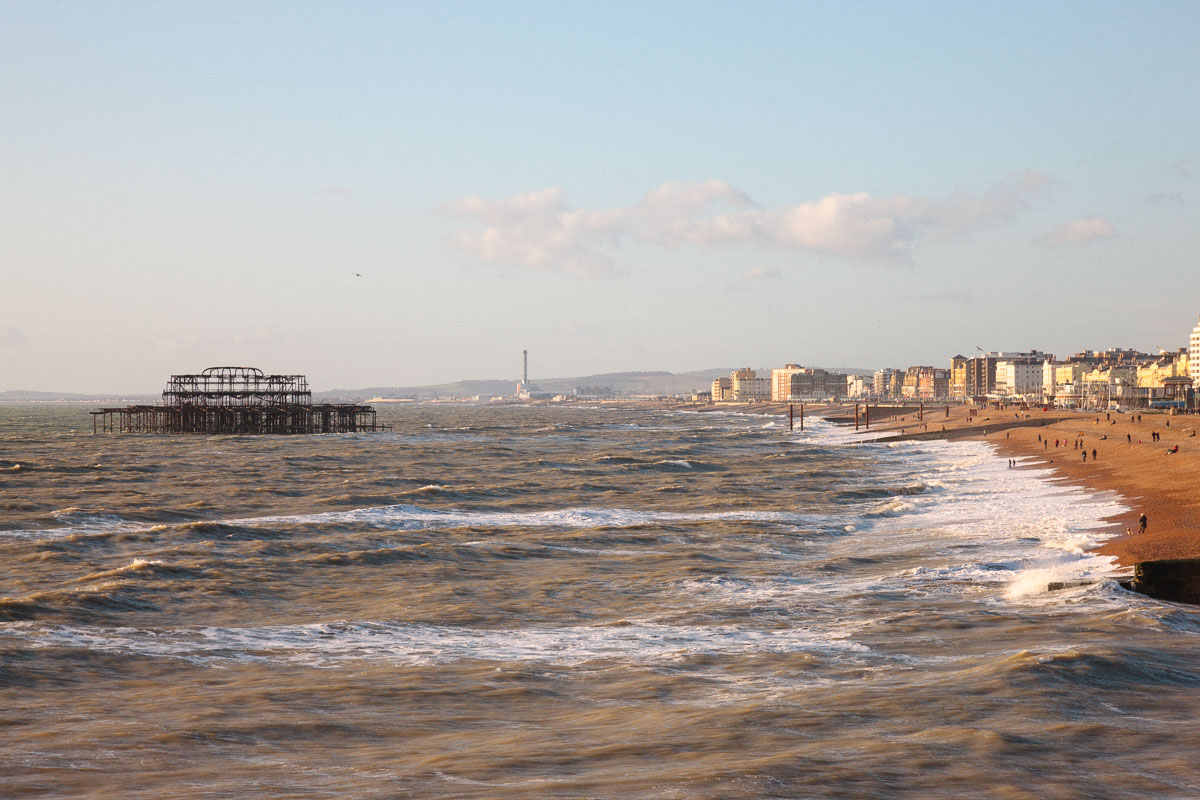
West Pier vs. Palace Pier
Many people confuse the two piers—so what happened to the first Brighton Pier, and which one still stands?
Brighton’s first pier, the West Pier, was opened in 1866 and was the one destroyed in 2003. The Palace Pier, which opened in 1899, still operates today but was officially renamed Brighton Pier in 2000 (to coincide with its centenary celebrations). Despite the rebrand, many locals and visitors still affectionately refer to it as Palace Pier.
So, is the Brighton Pier still there? Yes, but it’s the Palace Pier—still bustling with arcades, amusement rides, and traditional seafront snacks. It’s still a popular attraction on Brighton seafront, while the West Pier survives only as a haunting reminder of what once stood.
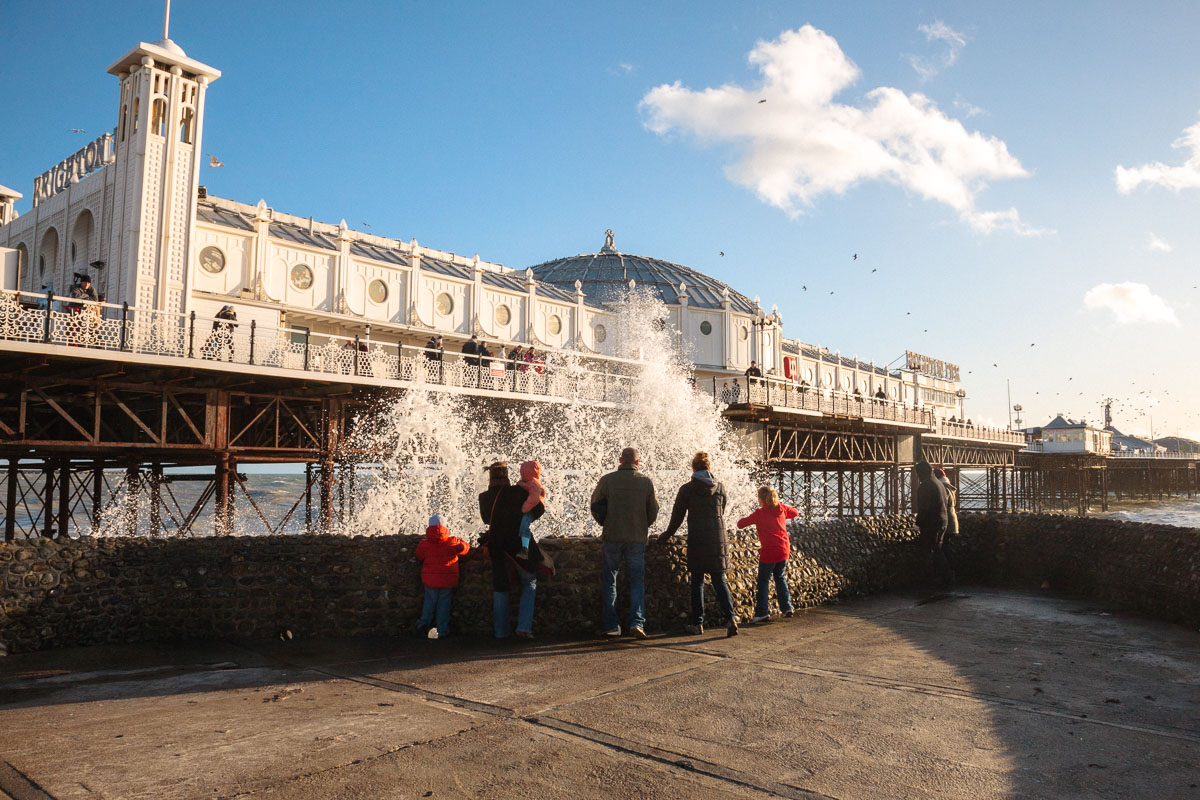
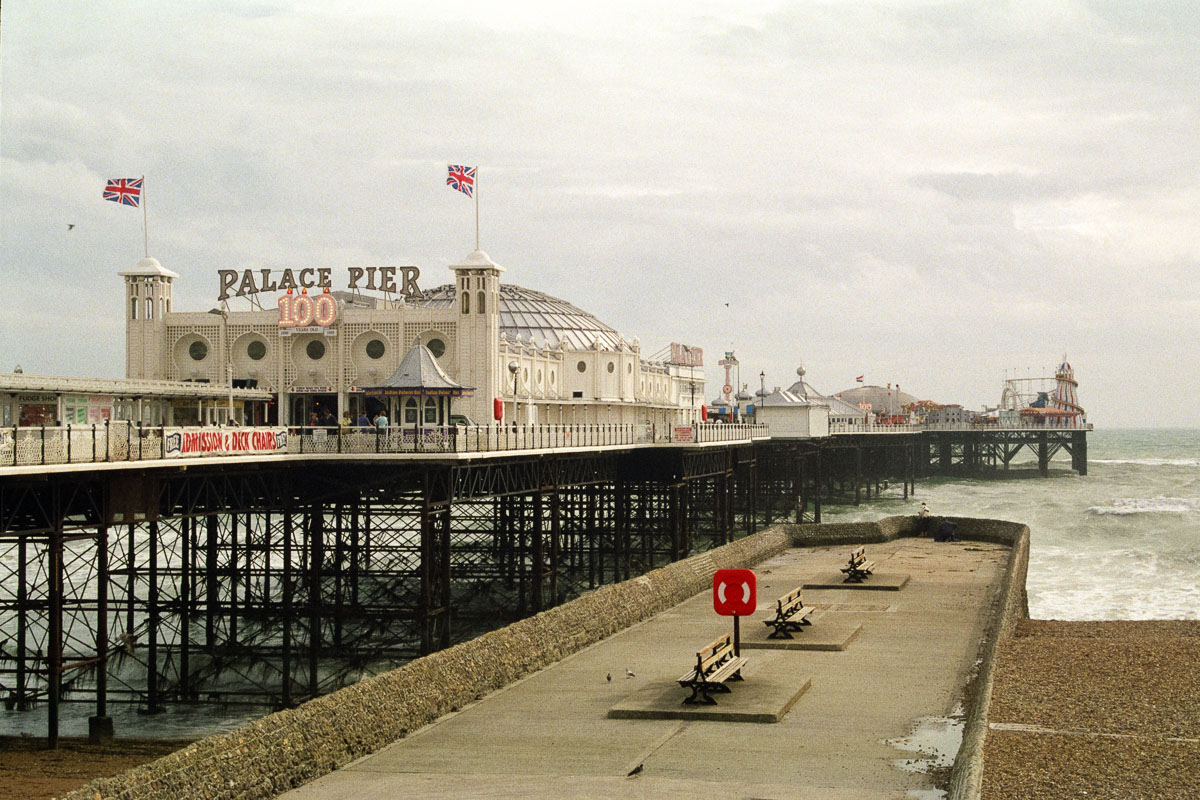
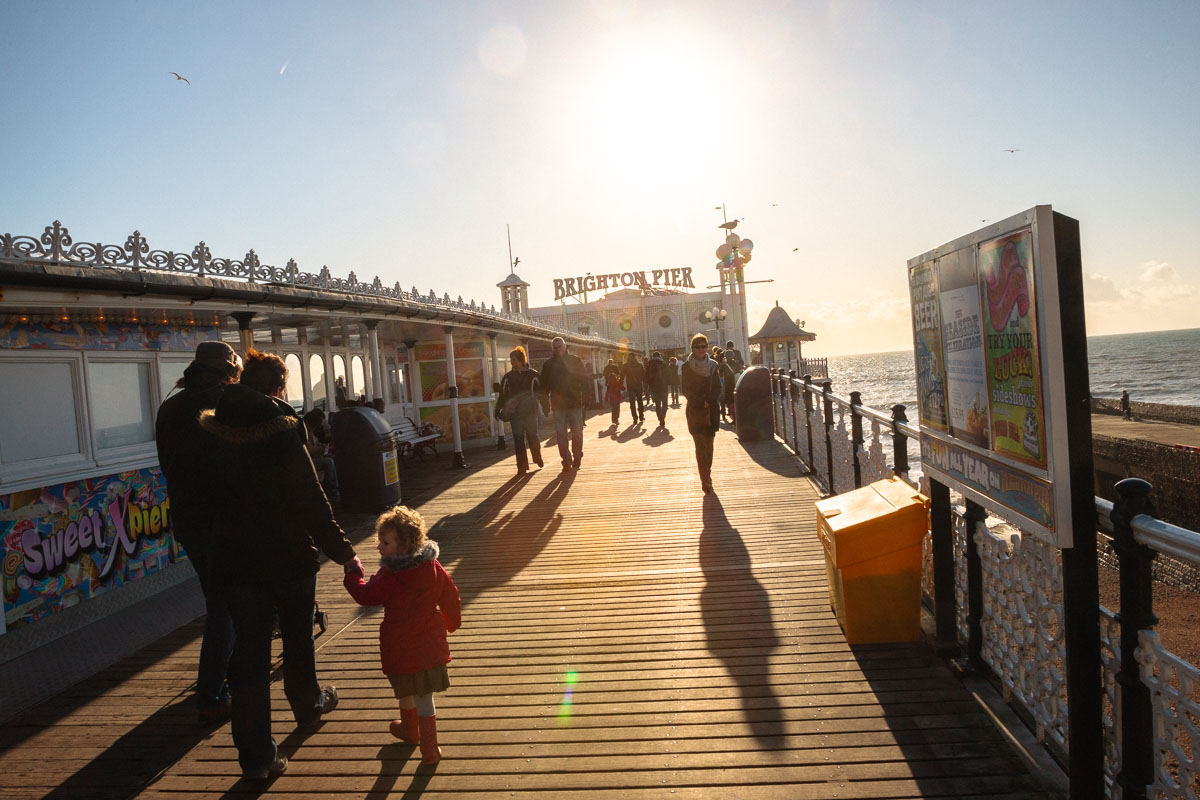
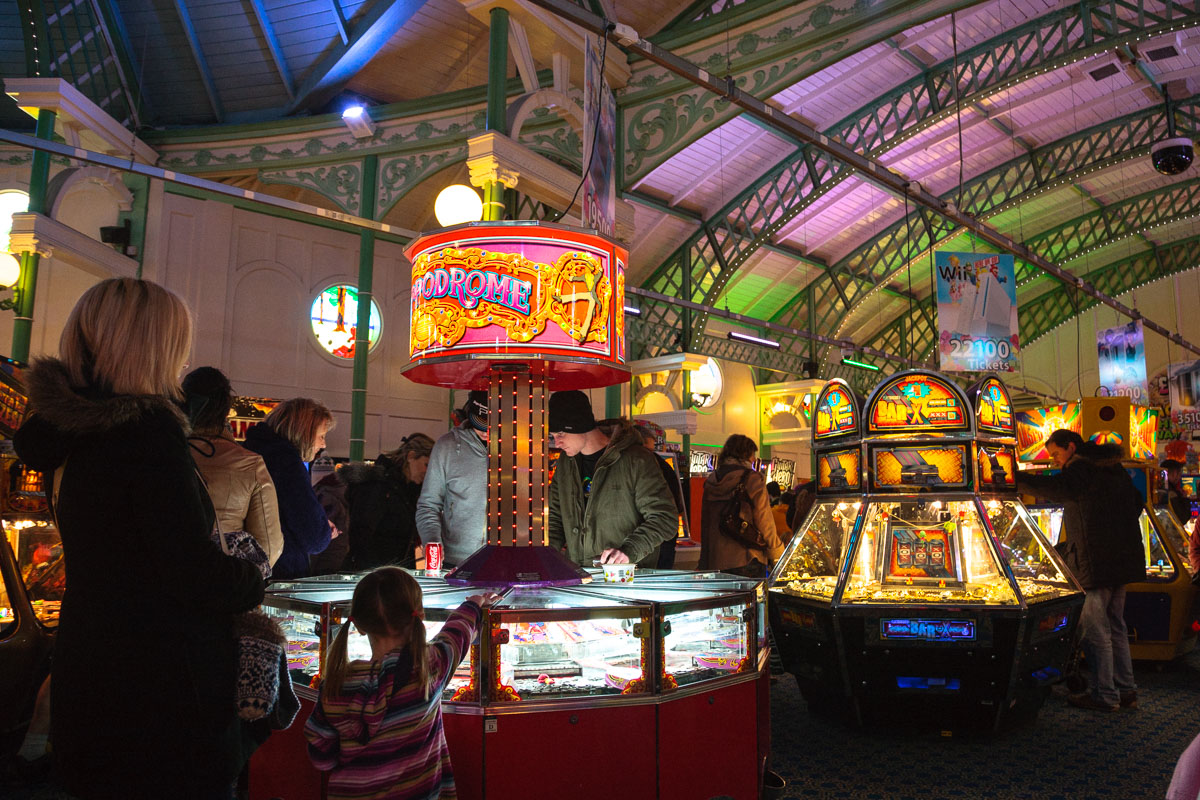
Brighton West Pier Today
So, what happened to Brighton West Pier after the fires? What remains is more than wreckage—it’s a memorial. A striking reminder of Brighton’s Victorian heritage. Artists paint it, photographers frame it, and visitors pause to reflect on its former glory.
Though we may never know the cause of the Brighton Pier fire, its emotional impact is clear. Indeed, the West Pier Trust continues to preserve its legacy through exhibitions, events, and historical projects. And the skeletal remains still draw thousands of curious onlookers every year.
A Lasting Legacy
Although the 2003 fires left West Pier in ruins, its skeletal frame has become an unofficial symbol of Brighton.
These images, taken before and after the Brighton Pier fire (2003), document a transformation, capturing the spirit of a place once alive with music and crowds, now standing in ruin and memorial.
More Photos of Brighton, 1999
Below are more 35mm photos I took in Brighton, capturing other scenes from this vibrant seaside city.
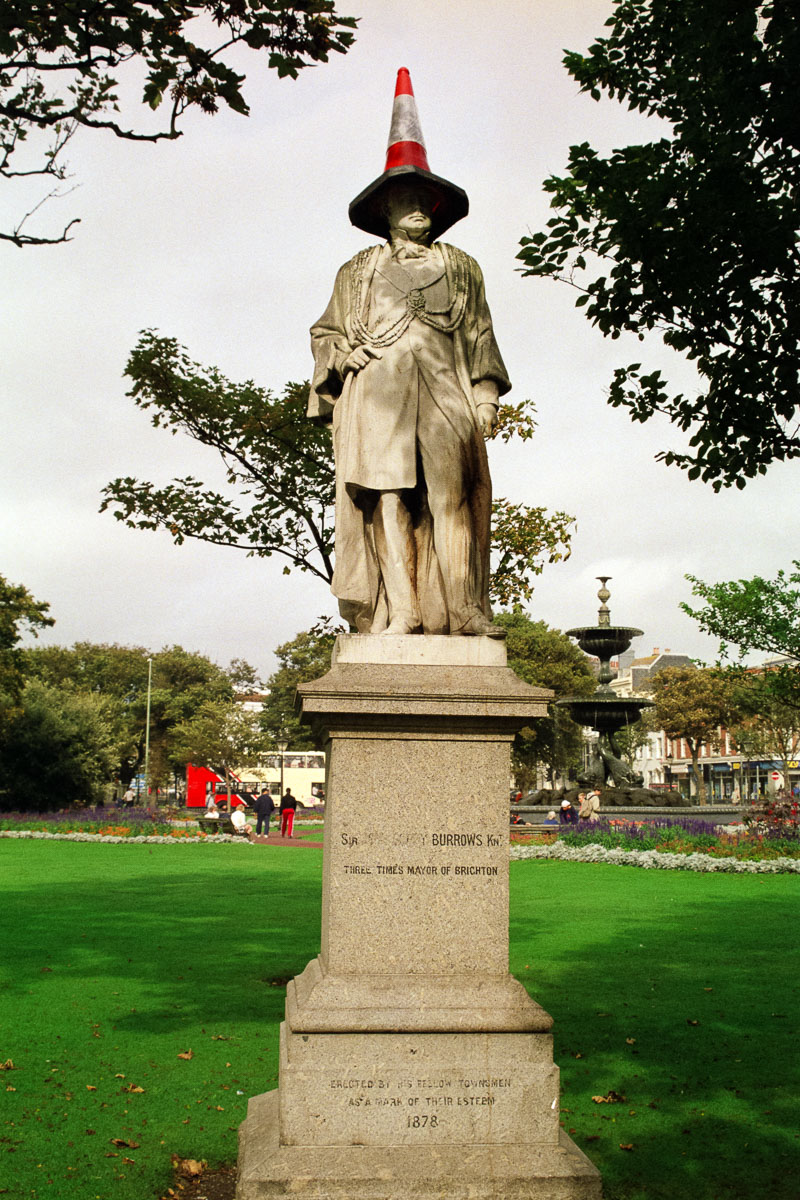
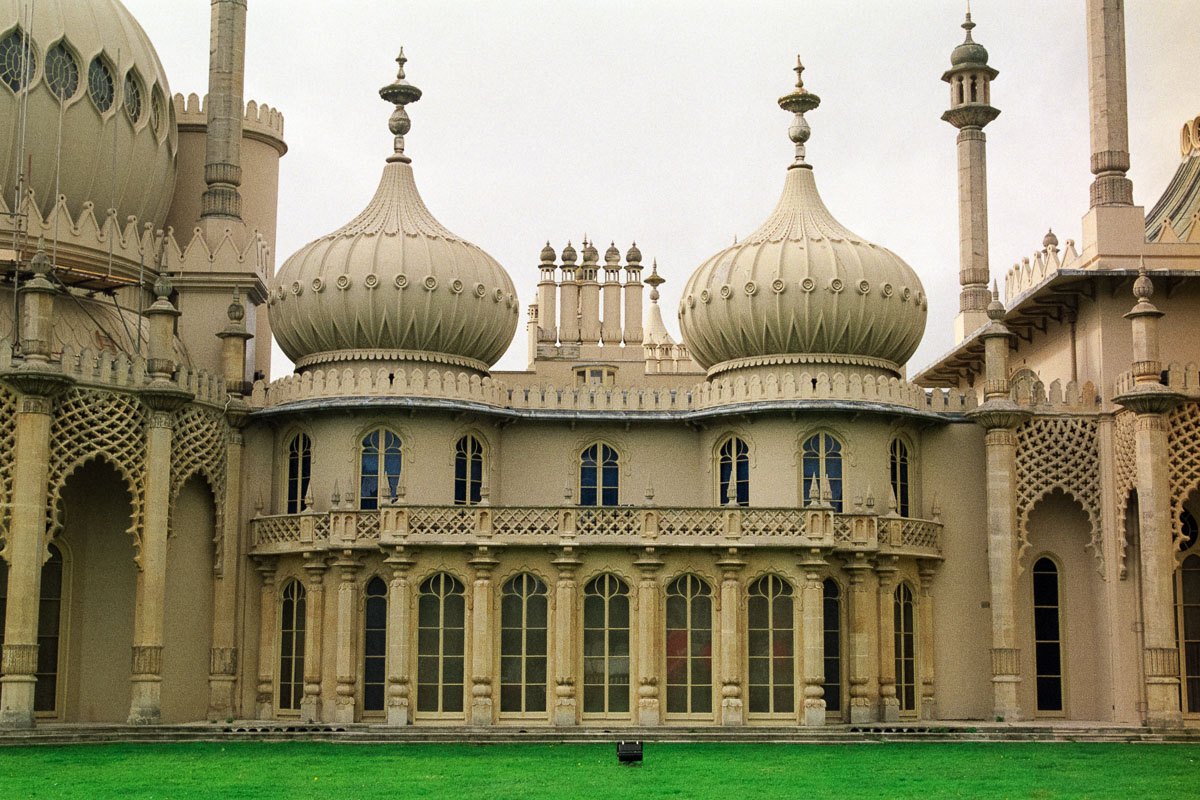
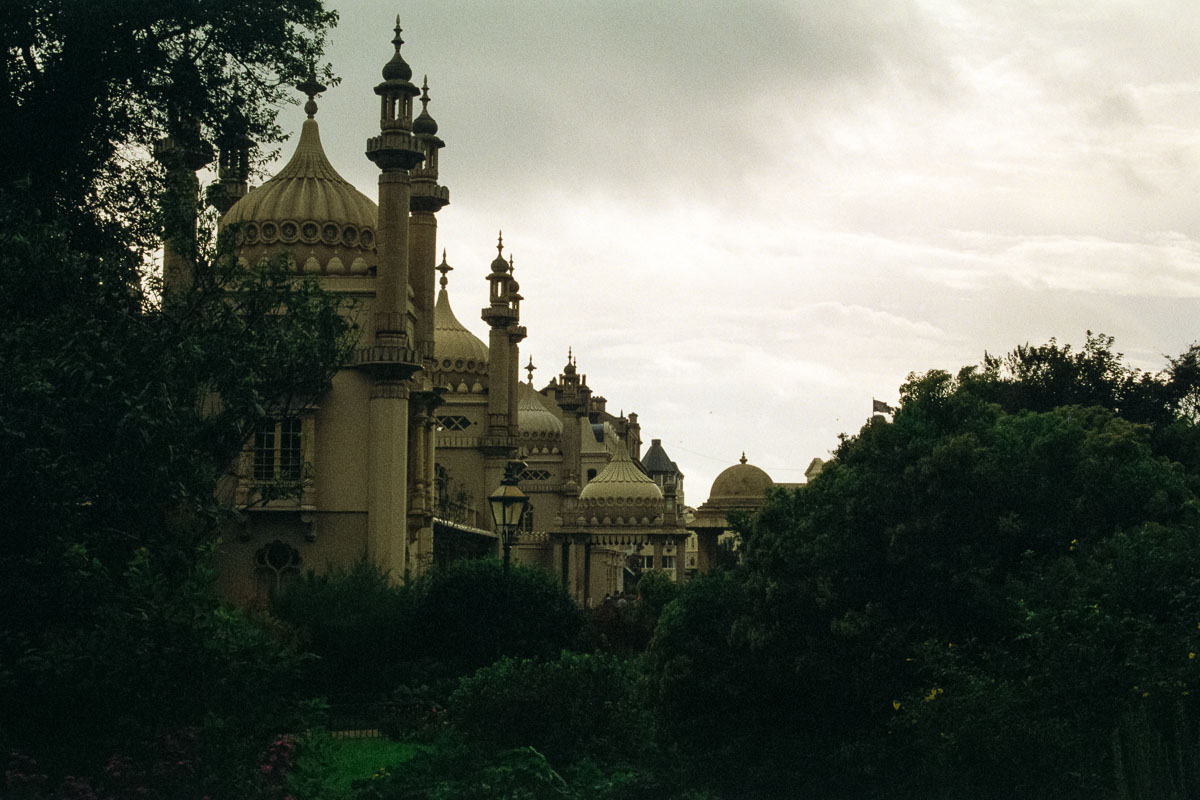
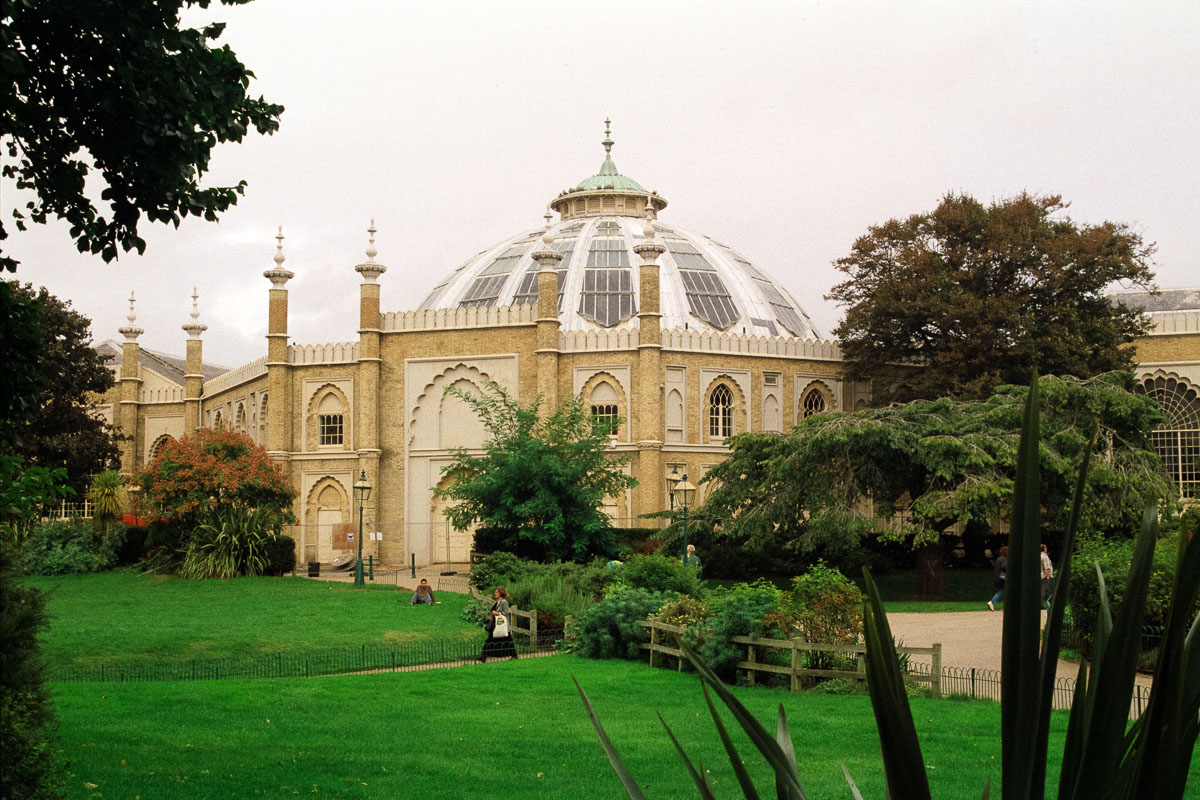
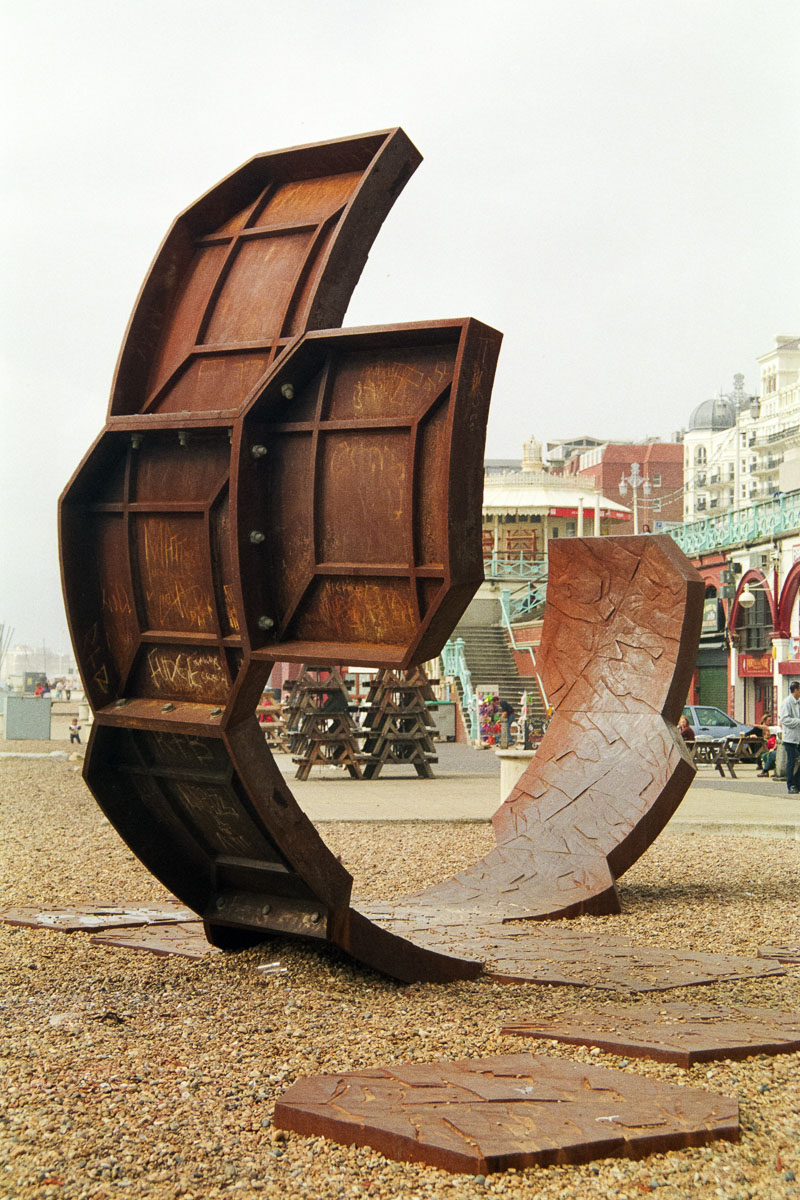
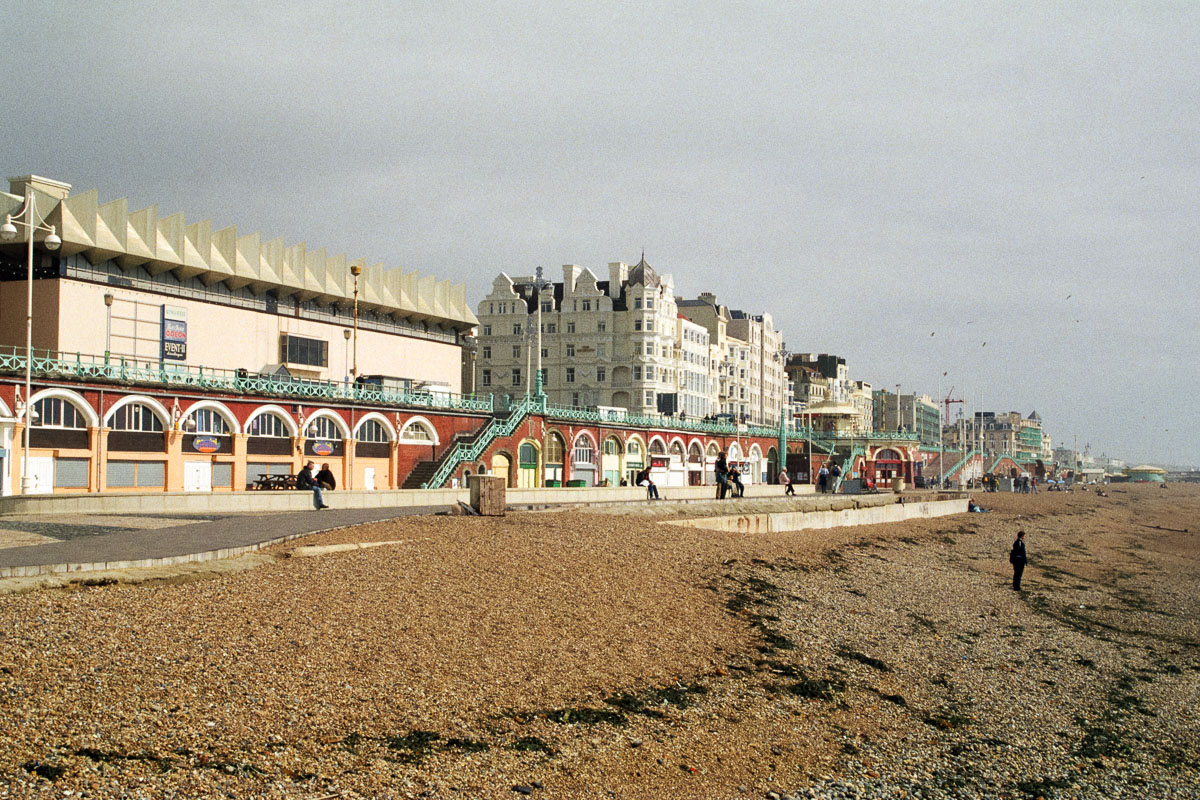
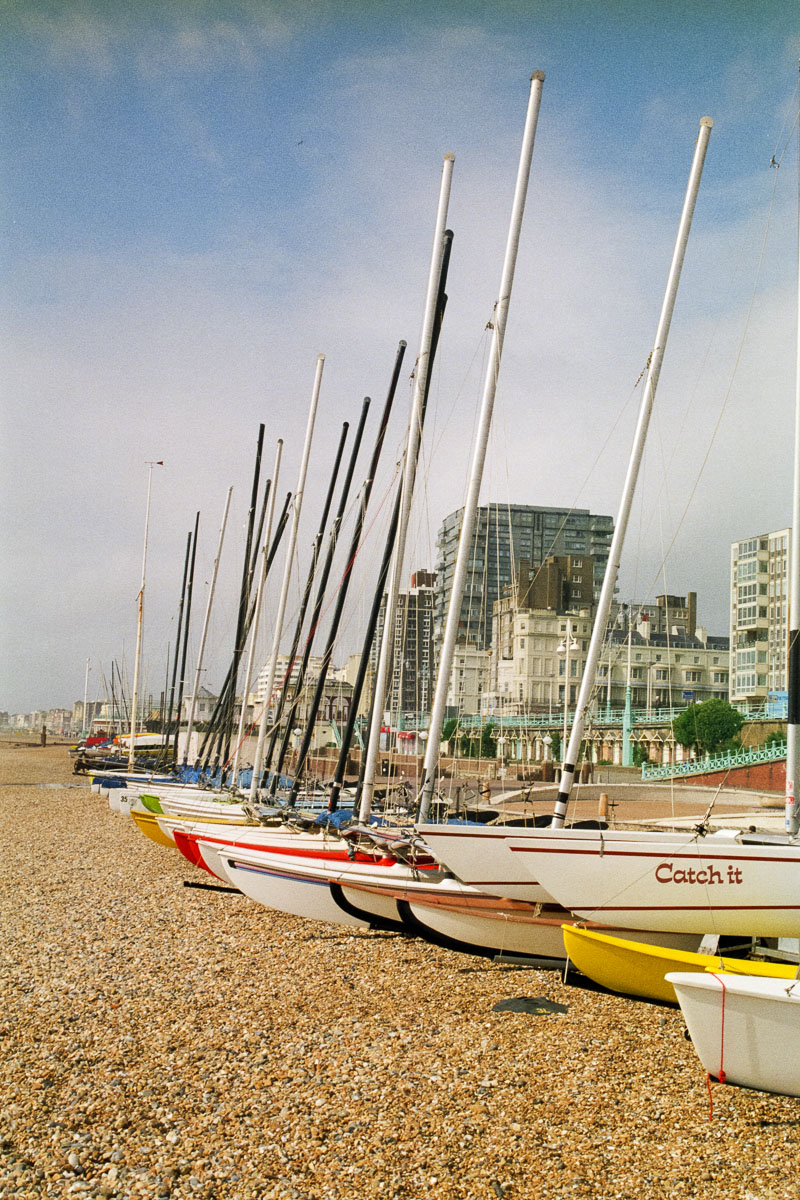
PHOTO DETAILS
Location: Brighton West Pier, East Sussex
Date: Winter 1999 (35mm film); Summer 2012 (digital)
Camera: Pentax MZ-50 (35mm SLR); Canon EOS-1Ds Mark III (digital SLR)
Film: Konica Centuria 200
Scan: Minolta DiMAGE Scan Elite 5400 using VueScan software
Love Britain’s seaside heritage? Share your memories of Brighton West Pier in the comments below!
➡️ Discover how exploring abandoned places can restore focus, creativity, and calm — read my full post: How Urbex Photography Helps Mental Health and Creativity.

